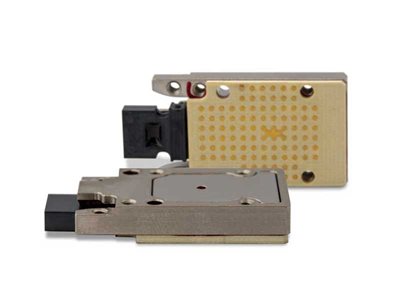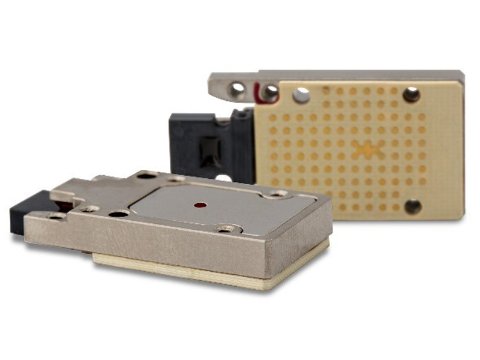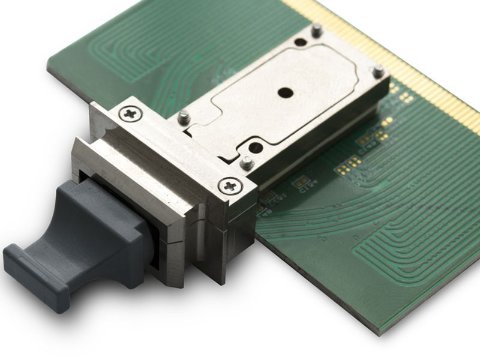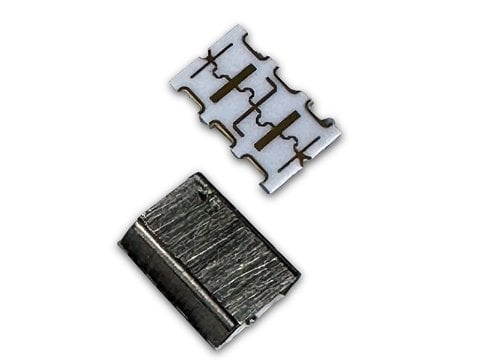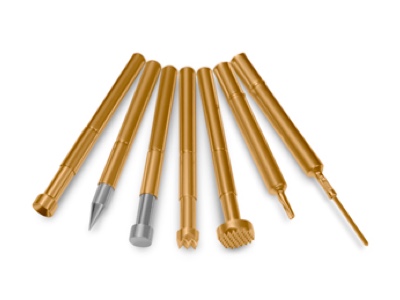All our devices are tested following ECSS process and lot acceptance. Component pre-screening can be done for every batch of transceivers sold for this application..
- Small: less than 6 mm high (module and interposer)
- Rugged: withstand radiation doses >100 krad (Si) and qualified per MIL-STD 883 shock and vibration.
- Expected life: up to 20 years
- Performance: up to 28 Gbps/channel over a recommended operating temperature range of –40 ºC to 85 ºC
- Link budget: >7 dB with BER 10–9 (measured at 25.7 Gbps).
- Low power consumption: 160 mW/channel (<6 pJ per bit)
- 4 TRX (4+4)-lane per module (100G, full duplex)
- 12 TX or 12 RX channel per module (300G half duplex)
- Multimode 850 nm wavelength laser
- Over 60 m reach on OM3 or OM4 ribbon fiber
- Standard MT parallel fiber connector
- RoHS
- Monitoring: LOS, RSSI, temperature, etc.
- Attaches to system board with 1,55 mm LGA interposer
Applications
- High-throughput communication satellites
- LEO satellite constellations
- GEO satellites
- Board-to-board and payload-to-payload connections
- High I/O density, high BW communication link
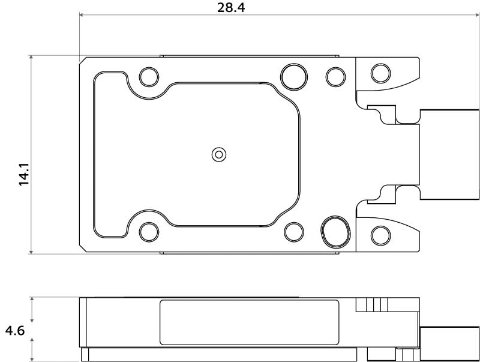
Drawing of SpaceABLE 28G SL radiation resistant embedded transceiver. Dimensions are given in mm.
Test summary
- Proton testing: Total Non-Ionizing Dose (TNID)
- Heavy ion testing: Single Event Effect & Latch-up (SEE and SEL)
- Gamma Ray using Cobalt-60: Total Ionizing Dose (TID)
- Random vibration: NASA GEVS, GSFC-STD-7000A
- TVAC: Vacuum < 5E-5 hPa
- Outgassing: ECSS-Q-ST-70-02C
LightABLE qualifications
- Vibration tests per MIL-STD-883, Method 2007.3.
- Mechanical shock tests per MIL-STD-883, Method 2002.4.
- Thermal shock tests per MIL-STD-883, Method 1011.9.
- Damp heat tests per MIL-STD-202, Method 103B.
- Cold storage tests per MIL-STD-810, Method 502.5.
- Thermal cycling tests per MIL-STD-883, Method 1010.8.
References
Stephen Buchner, Paul Marshall, Scott Kniffin and Ken LaBel. “Proton testing guidelines”, NASA/Goddard Space Flight Center, 2002.
Doug Sinclair and Jonathan Dyer. “Radiation Effects and COTS Parts in SmallSats”, SSC, 2013.
28G Optical Transceivers for Space
Electrical connection with interposers
LightABLE™ and SpaceABLE™ electrical connection with interposers
Optical connection with screw-in connector
Optical connection with MicroClip
Optical Interconnect Design Challenges in Space


